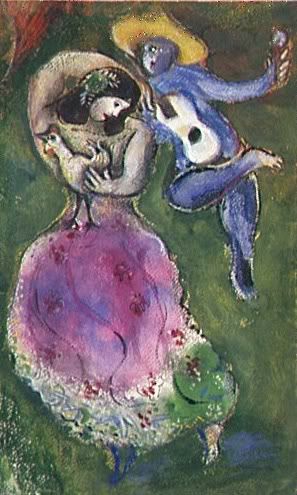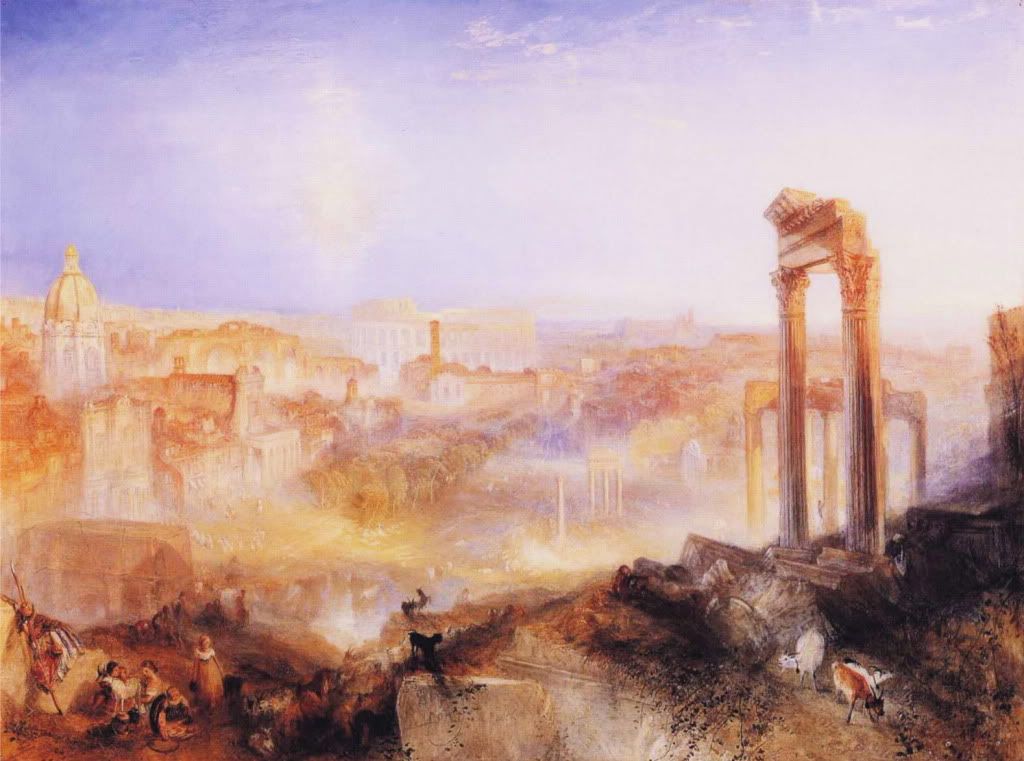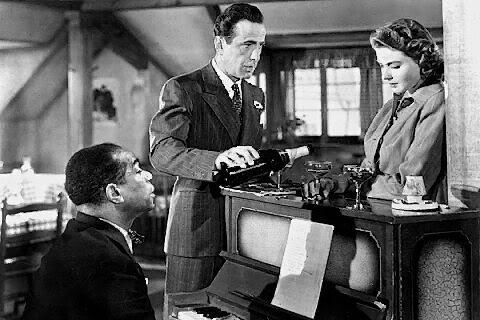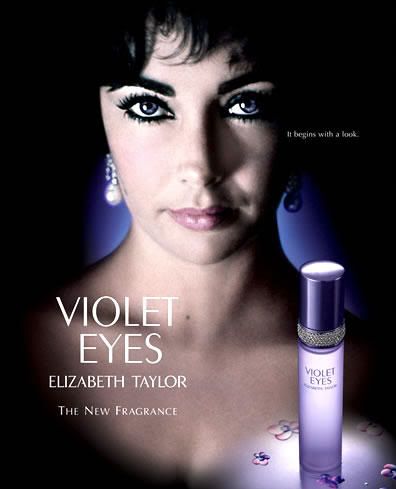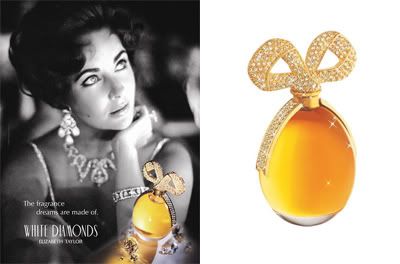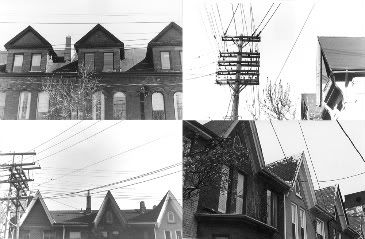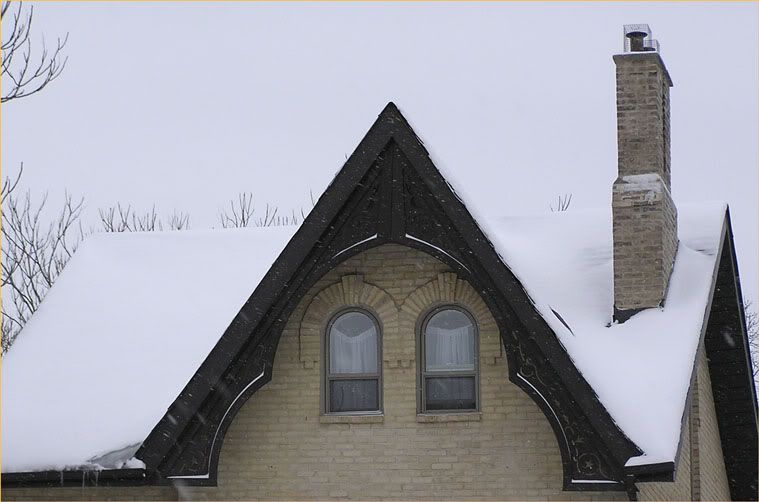Marc Chagall
Couple de Danseurs (Dancing Pair), 1941
Gouache, watercolor, and ink on watercolor paper
16 1/2 x 10 1/4 inches
Musée National d'Art Moderne, Paris
I have had a Chagall on my wall for many years, either as a poster or as a postcard (or two). One large poster which I've had now for close to two decades, and which never seems to tear or crease despite having been in and out of various packages over the years, is of the painting
A Dancing Pair (shown above).
What first attracted me to the painting is the woman's dress. Its floral pattern blends in with the background, merging woman with nature.
Music is melded into the man's persona, like nature is in the woman's, where his waistcoat has been ingeniously transformed into a guitar. He is wearing a bright yellow, cheerful straw hat, which softens a little his frenzied leap towards the woman.
There is also a dance going on, or the beginnings of a couple's dance, where the man is bringing a flower to the woman, leaping and a bounding towards her.
The colors, especially in the original, and in the poster I have, are deep and saturated (the above image doesn't quite do it credit, but it is close enough). In design language, the red/rose of the woman's dress contrasts with the green of the background, and with the lower strip of the dress itself (see this
color wheel, where opposite colors are "contrasting" colors). Contrast makes the image interesting through the tension of these contrasting colors. But, this contrast, as it isolates the woman, also gives her a self-contained environment. She becomes important in her own world; she becomes an individual - a woman.
Then we have the "foreign" element, the leaping man in blue (even his face is an alien blue), who pushes into the woman's sphere from some other galaxy (it seems as though he's emerging from the sky), adding a new dynamic (constellation?) to her world. The man's bright yellow straw hat contrasts with his blue costume, also giving him a contained, individual presence. He is also contrasting with the woman's colors: hers are warmer, his are cooler (here is
another version of the color wheel, showing groups of colors on opposite - contrasting - sides of the wheel).
Finally, even the man's movement is in contrast with the woman's stasis; he is moving (leaping) towards here, she is waiting (glancing back for encouragement) for him to approach. Yet the man's blue shadow is reflected on the woman's pink/red dress, merging the two both in movement (direction) and in color, albeit with the man imposing himself on the woman.
The painting is dealing with two energies, male and female, man and woman.
But, in Chagall's paintings, it is not only the humans who are given importance, but also the surrounding, often farm, animals. Perhaps it's Chagall's
memories of Russian Jewish peasantry that encourages him to repeatedly include animals in his paintings, even after he moved to sophisticated, urban Paris (yet another contrast). In that earlier, earthy world, the farm is the center of life, and the animals have to be taken care of equally well, like the human inhabitants. Some of Chagall's paintings take on an anthropomorphic turn, where man and animal merge together to form a new beast. At other times, the animals make allusions to some human condition. In the above painting, the woman is clutching a rooster. Is she anticipating the man in her arms? Is she encouraging him that this could be (if he is clever enough) where he belongs?
Often, in Chagall's paintings, it is a violin which is the central musical theme, and not a guitar (as in the above painting), where it is often played by a man with a green face (as the money-greedy Jew?). Here is one writer who
explains the "greenishess" of the violinist:
Is this a lament over the death of tradition and the anxiety of change? No, the man’s greenishness, while possibly meaning various things like envy or greed, is best understood as a symbol of life and living. This is in keeping with other of Chagall’s works where he celebrates the theme of life with living plants, flowers, and other botanical elements. This fiddler, central to “the tradition” of the [Russian Jewish] village is also alive and well even in the midst of the fast-paced changes all around him. And the purple speaks of stable passion, emotional exuberance under control of the mind. Excited about the future even while retaining memory of the past.
Plaintive
Yiddish melodies, so aptly captured on the violin, come to mind, as concludes the
Guggenheim's on-line description on Chagall's
Green Violinist:
In Green Violinist Chagall evoked his homeland. The artist’s nostalgia for his own work was another impetus in creating this painting, which is based on earlier versions of the same subject. His cultural and religious legacy is illuminated by the figure of the violinist dancing in a rustic village. The Chabad Hasidim of Chagall’s childhood believed it possible to achieve communion with God through music and dance, and the fiddler was a vital presence in ceremonies and festivals.
Hollywood pays homage to this image, and popularized Chagall's violinist, by giving us Topol in
Fiddler on the Roof. Although the musical is an adaptation of the short story
Tevey and his Daughters by Yiddish writer
Sholem Aleichem, Topol takes his character from another of Chagall's green-faced musicians,
The Fiddler.
When Chagall migrated to France, he continued to paint his multi-faceted images. His view may have changed from the earthy farms to the more sophisticated Parisian vistas, but he kept his ancestral imagery in his works. His roosters, dancing couples and bouquets of flowers, amongst many others, continued to be important themes in his paintings. Here is what he
says about Paris:
I left my native land in 1910. At that moment I decided that I needed Paris. I came because I sought the light of Paris, its freedom, its refinement and the skills of the craft. Paris lit up my shadowy world like the sun. But in seeing the light, at the Louvre and elsewhere in France, I did not forget the country where I was born. On the contrary. I saw it more clearly. I could, of course, have expressed myself in the town where I was born. But I wanted to see with my own eyes the things I had heard about so far away that "revolution of the eye," the colors that blended freely into each other, reflecting the light whilst striving energetically with one another in the flow of a studied or a casually dominant line. The sun of art shone only in Paris. It seemed to me then, as it still does, that there can be no greater revolution of the eye than that I experienced on my arrival in Paris.
Here are some common motifs in Chagall's paintings:
- Roosters
- Donkeys
- Goats
- Ox
- Fish
- Other barn animals
- Horse and carriage
- Flowers (often bouquets)
- Weddings
- Brides
- Moon (both full and crescent)
- Lovers at night
- The Eiffel Tower
- Views of Paris from windows
- Clowns
- Peasants
- Angels
- Scenes from the Old Testament
- Jesus' crucifixion (more on this later)
---------------------------------------------------------------
Reference:Chagall: Watercolors and Gouaches. Werner, Alfred
